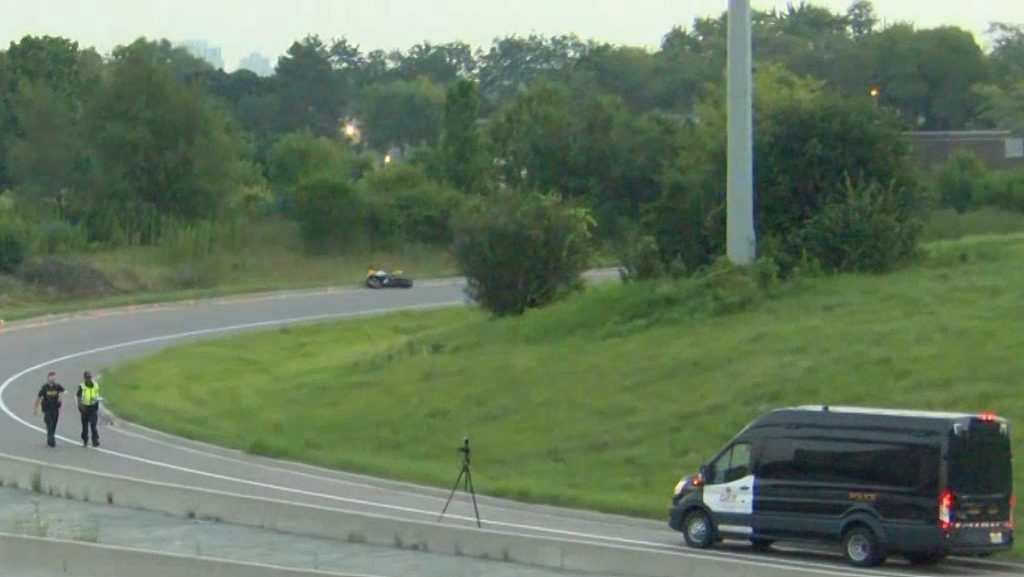Magnitude 6.1 earthquake shakes Vancouver Island as ‘swarm’ of quakes continues

Posted July 11, 2024 11:39 am.
Last Updated July 11, 2024 12:54 pm.
Earthquakes Canada says a magnitude 6.1 earthquake has been recorded off the west coast of Vancouver Island Thursday morning.
The national earthquake agency says the quake, which was recorded at 8:08 a.m. PST, is part of an ongoing “swarm of earthquakes offshore Vancouver Island, at the intersection of the northern Juan de Fuca Ridge, Sovanco Fracture Zone, and Nootka Fault Zone.”
Emergency Info BC says there is no tsunami threat to B.C. due to the quake.
Speaking to CityNews Thursday morning, John Cassidy, an earthquake seismologist at Natural Resources Canada, said there have only been a few felt reports due to the quake.
“This earthquake, although it’s a large earthquake, is still far enough away that it hasn’t wasn’t felt by most people on the island and the closest communities,” he explained.
The US Geological Survey initially recorded the quake, about 220 kilometres west of Tofino, as being magnitude 6.6, and Cassidy explains that the magnitude recorded may change over time as “more data comes in and more analysis” is done.
Cassidy says earthquakes over magnitude 6 “do occur” in our region, with 11 being recorded over the last 25 years.
“A few earthquakes like this [happen] every decade. They’re not unheard of. But they don’t happen every year. So, they are relatively rare events,” he explained.
“And these are really large earthquakes. So a 6.1 close to a city would be very strong shaking, and some damage would be expected.
“Certainly you’d see broken windows, broken chimneys, you’d see items coming off of shelves. Very frightening shaking if you’re close to that sort of an earthquake.”
Cassidy says due to the earthquake’s distance away from populated areas, it “lost its punch.”
“We’ve seen hundreds and hundreds of magnitude 5 and 6 in this area over the decades. So, it’s a region of very active plate tectonics,” he explained.
Thursday’s earthquake comes after the region saw about 10 earthquakes since the beginning of July, according to Earthquakes Canada.
Cassidy said the region sees “swarms” of earthquakes every few years or so, but generally, they consist of much smaller quakes.
“These are not uncommon, that you just have a burst of seismic activity that may last for a few days, or it may last for a couple of weeks. And, that’s typically what we see off of our coasts, the swarms of much smaller earthquakes will continue and then die off suddenly, after a week or so,” he explained.
“This particular swarm that we’ve seen since July, the third has been a series of magnitude 4 and 5 earthquakes. And today’s of course, is the largest in that sequence, it’s in the same general area. So we expect it would be a part of that swarm.”
In September 2001, Cassidy explained, the same region saw a very similar swarm of earthquakes that lasted for nearly two weeks.
“That particular swarm finished off with a couple of magnitude 6 earthquakes. And then it just stopped, that was the end of it. And there were no more earthquakes. So this particular sequence that we’ve seen over the past week, is interesting. But again, we’ve seen this before when we go back 20, 25 years.”
Cassidy said swarms like the one the region is currently experiencing are nothing to be concerned about. But, it is a reminder that we live in a “very active earthquake zone.”
“This is a region where ocean plates are being formed. So you have magma coming up from deep beneath the ocean to the surface, forming new ocean plates, tectonic plates, that are then being pushed towards North America,” he explained.
“It’s a good reminder for all of us to check our earthquake kits and preparedness kits. The same kit that works for an earthquake also works for wildfire and for flooding,” he explained.
You can watch CityNews 24/7 live to keep up to date with this story. You can also subscribe to breaking news alerts sent directly to your inbox.
–With files from Sonia Aslam








